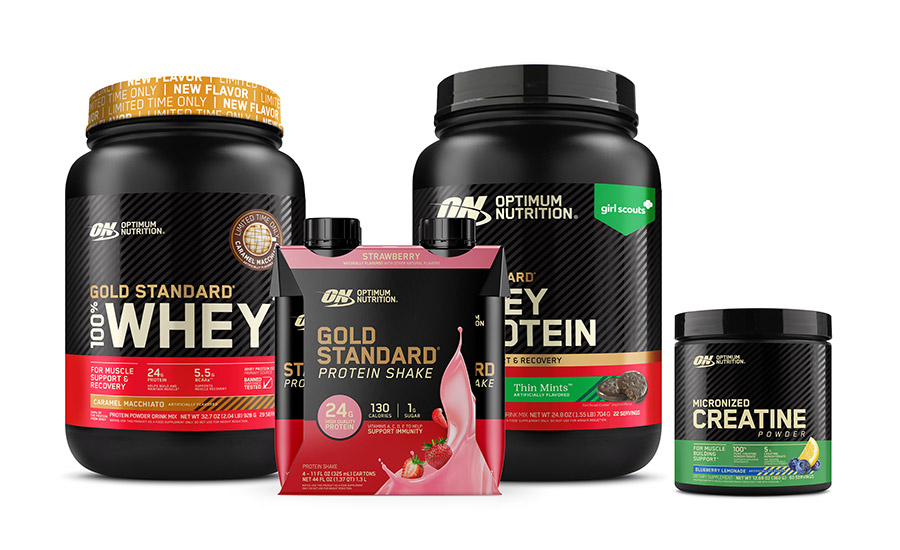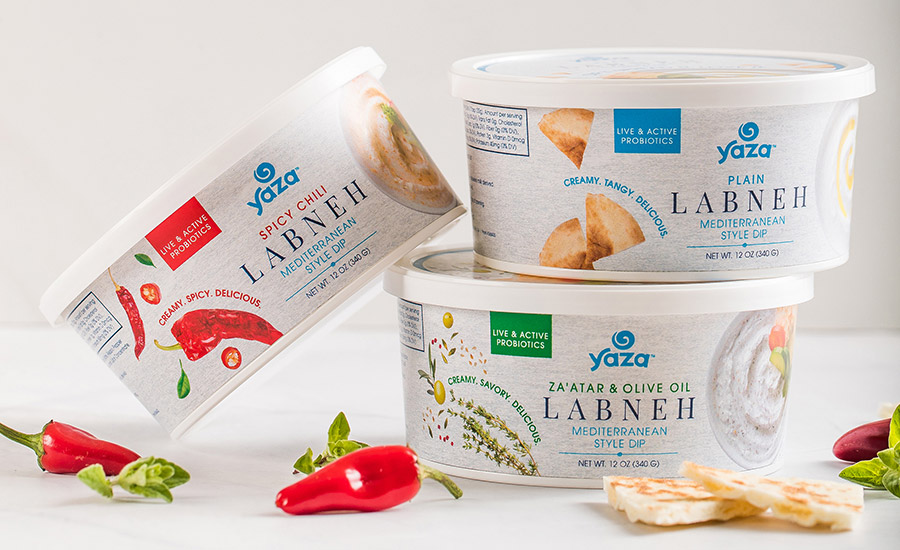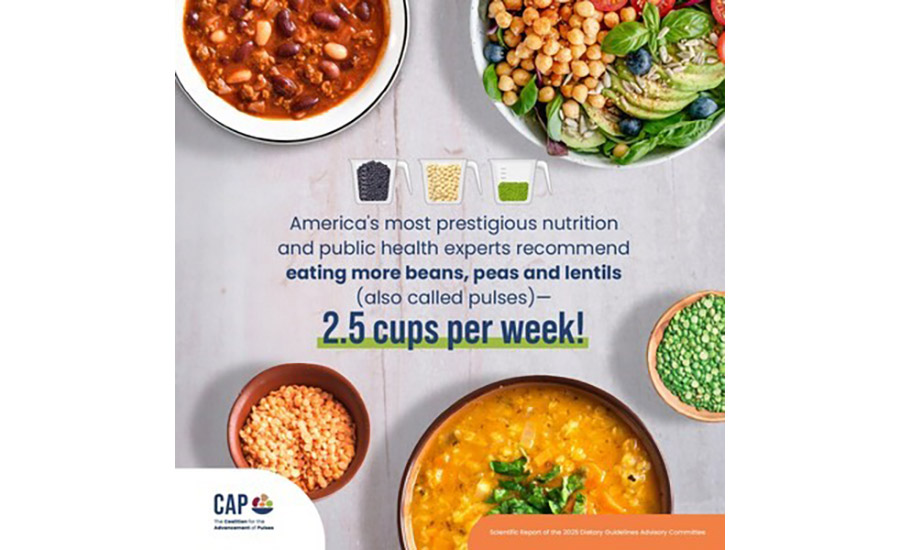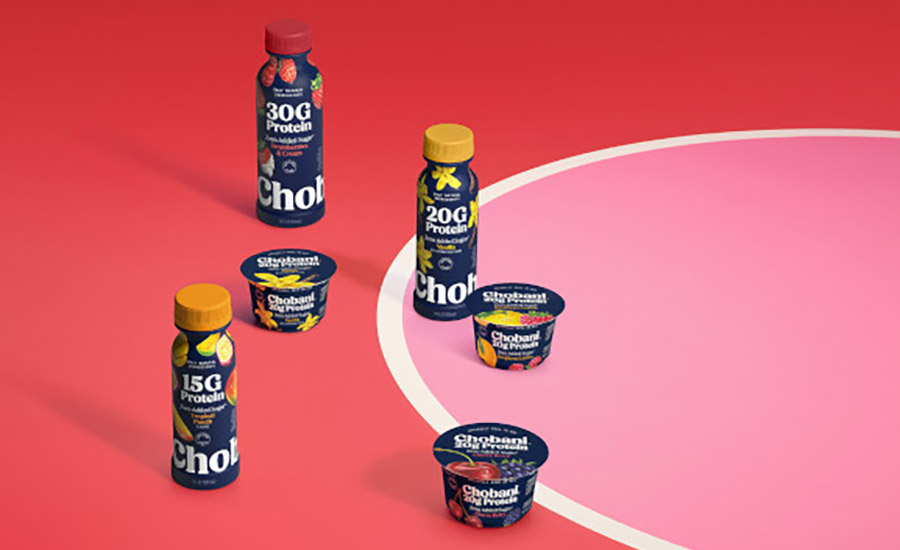Whenever a new year begins, most of us strive to make some resolutions such as going to the gym, drinking less (aka, Sober January), and stopping smoking. Yet, according to Statista, 23% of people resolve to “live healthier,” and 20% are fixated on “losing weight,” especially after overindulging and packing on an average of two to five pounds over the holidays.
An estimated 45 million Americans go on a diet each year, and the total U.S. weight loss market reached new highs of $89.9 billion in 2023, expected to grow 4.3% to $93.8 billion in 2024, according to Marketdata. Nearly two-thirds of Americans are overweight or obese, which can cause chronic health issues like cardiovascular disease, stroke, diabetes, and hypertension. A higher percentage of women (56.4%) than men (41.7%) are actively trying to lose weight.
Denisse Colindres, senior manager of nutrition communication, North America, at Parsippany, N.J.-based BENEO, urges consumers not to freak out since setting small, realistic goals can help reduce one’s waistlines in a natural, sustainable way. Here are a few tips:
- Focus on progress, not perfection. Sustainable health begins with small, manageable steps that become habits for life. The new year offers a fresh start, and it's encouraging to see so many people motivated to prioritize their health. However, shifting the narrative from quick fixes to sustainable, long-term habits is important.
- For example, consumers can focus on small, realistic goals that build momentum instead of aiming for drastic weight loss. Simple changes like adding more nutrient-dense foods—such as those rich in protein, fiber, and low-glycemic carbohydrates—can make a difference. These ingredients not only promote satiety but also support energy levels and overall health, making it easier to stick with healthier habits over time.
- Additionally, adopting a holistic approach to health — combining movement, mindfulness, and smart nutrition choices — can help break the cycle of weight gain. Remember, progress is not about perfection but about consistency.
A magic bullet?
The market for prescription weight loss drugs in the U.S. more than doubled in 2023, from an estimated $5.1 billion in 2022 to $11.9 billion in 2023, according to Marketdata. Demand is soaring and semaglutide injections, sold as Ozempic and Wegovy, are experiencing shortages and cost between $200 and $350 per month.

Yet, Hollywood stars and non-celebrities looking to shed pounds quickly are turning to gastric bypass surgery and “wonder” drugs like Ozempic, used to treat adults with Type 2 diabetes and weight loss, and Wegovy, a GLP-1 agonist that mimics a natural gut hormone and acts on areas of the brain involved in regulating one’s appetite.
Yet, these medication’s potential side effects can include nausea, experienced by 44% of consumers, vomiting, diarrhea, stomach pain, constipation, headache, dizziness, tiredness, and even changes in facial appearance, doctors say.
Americans spend big bucks on weight-loss products but caution is needed when using them. A quick internet search for the aforementioned medications brought up a site proclaiming “No Clinic Required.”
Dairy and diet
Dairy foods like milk, yogurt, Greek yogurt, kefir, whey protein powders, and other functional ingredients like prebiotics and probiotics can play a pivotal role in diet, nutrition, and weight management. Reducing the amount of sugar, increasing the amount of protein to increase satiety, the hydration of water and milk, and less calories can obviously play a role in diet and weight management, according to the ingredient suppliers Dairy Foods spoke with.

Healthy bodies and healthy minds remain top trends in the food and beverage industry as “consumers lean into health and wellness, and weight management is certainly a big part of that journey,” says Mark Fahlin, category leader for dairy and specialized nutrition at Cargill, Minneapolis.
“We're aware of multiple studies on the topic and have a broad ingredient portfolio to support consumers and customers looking to reduce sugar and calories, while adding critical nutrients like protein and fiber,” Fahlin adds.
Vaughn DuBow, senior director of Product Portfolio Marketing, Health & Wellness at Chicago-based ADM, concurs that weight management is an ongoing focus for many consumers, as the majority recognize the overall benefits for maintaining a healthy weight and supporting metabolic health, like healthy aging and heart health.
“Globally, consumers state that ’my waistline’ is a top factor in how they measure ‘good health,’ and this factor is just behind ‘how fit and active I am’ and ‘my mental well-being,’” he says. ”On top of that, the World Health Organization reports that 30% of the global population are overweight, and 60% seek weight control.
“The increasing awareness and use of anti-obesity medications (AOMs), including GLP-1 receptor agonists, over the past year has spurred an even greater focus on weight management and loss. It’s projected that the global market for AOMs will reach $100 billion by 2030,” he continues. “This signifies a substantial shift in how people are approaching their weight management journeys and creates a new segment of consumers engaging with GLP-1 treatments.”
Proprietary consumer research from ADM shows that 83% of U.S. consumers using AOMs find products specifically marketed as supportive of people on GLP-1 medications appealing. Additionally, 81% of these consumers state they would be willing to pay more for food and beverage products that provide added health benefits to support them while using AOMs.
A global survey on behalf of BENEO shows that two-thirds (64%) of consumers are now more interested in ingredients, or food and drink products, that provide protective or preventative health benefits. “A recent report from HealthFocus International shows that 88% of global consumers want better-for-you options, even in indulgent categories,” BENEO’s Colindres notes.
Dairy brands bring tailored solutions
Food and beverage brands, including dairy product manufacturers, have an opportunity to reach this growing consumer base with uniquely tailored solutions.

Protein in ready-to-drink (RTD) products or powders is a nutritious, viable solution. For example, Downer’s Grove, Ill.-based Optimum Nutrition expanded its portfolio with six new flavors across product lines including Gold Standard 100% Whey, Gold Standard Protein Shake, AMIN.O. ENERGY, and Micronized Creatine Powder. The Gold Standard Protein Shake, available in Strawberry, Chocolat,e and Vanilla flavors, is a ready-to-drink option with 130 calories, 24 grams of protein, and 1 gram of sugar in a grab-and-go format that proves convenience doesn't have to compromise on quality, according to the company.
In November, Norwich, N.Y.-based Chobani LLC introduced a new line of high-protein Greek yogurt cups and drinks made with only natural ingredients, real fruit, and zero grams of added sugar. Launching this month, Chobani High Protein 15G, 20G, and 30G Drinks are 14-ounce single-serve drinks with protein as a key ingredient. The 30G variety, the largest amount of protein Chobani has launched in a RTD, is available in Strawberries & Cream and Vanilla Ice Cream.
Drinkable products aren’t the only products delivering protein. Yaza Labneh, a thicker, creamier strained yogurt, packs 5 grams of protein in one ounce. Made with just milk and salt, the Mediterranean-inspired labneh is high in protein, calcium and rich in probiotics that can help improve digestive and immune health.
Pulses, dried, edible seeds from legume plant such as beans, peas, lentils, and chickpeas (aka garbanzo beans), with their dual value as both a vegetable and protein source, play a critical role in elevating the nutrition value of a recommended 2,000-calorie diet, according to the Dietary Guidelines Advisory Committee (DGAC). In December, the DGAC recommended consuming 2.5 cups of pulses a week for optimal benefits.
Blended dairy products, such as those that include whey and soy or pea protein, or those that incorporate a variety of plant-based and wholesome ingredients, are particularly poised for growth and innovation to support consumers on AOMs, ADM’s DuBow states.
Protein helps satisfy hunger, reduces the urge to overeat, and helps maintain muscle mass during weight loss, says Cargill’s Fahlin, who notes the “big storyline is protein” as he credits dairy products as “nutrient-dense protein foods.”
Cargill’s portfolio includes PURIS pea protein, which enables brands to formulate plant-based dairy-alternative products with significantly higher grams of protein per serving. For example, due to its improved solubility and taste profile, PURIS 2.0 pea protein has been used to craft plant-based dairy alternatives with 30 grams of protein — more than enough for a high protein claim, Fahlin says.
DuBow notes that ADM’s biotics are clinically proven to support weight management. “For instance, satiety is one of the most crucial components for weight management, and prebiotic dietary fibers like Fibersol may delay hunger and stimulate appetite-regulating hormones and may increase satiety perception,” he says. “Clinical research demonstrates that Fibersol may increase appetite-regulating hormone GLP-1 as part of a normal physiological response in healthy individuals when consumed at 10 grams with a meal.”

On the sugar reduction side, Cargill’s toolkit includes Truvia and ViaTech stevia leaf extracts; fermentation-derived EverSweet stevia sweetener; and bulking sweeteners like Zerose erythritol and allulose, which pair well with stevia and are used in many reduced- and no-added-sugar dairy and plant-based dairy alternative products.
On the natural sugar side, BENEO’s alternative carbohydrate Palatinose (generic name, isomaltulose) has been on the market since the mid-1980s.
“Sucrose from beet sugar is converted to isomaltulose by a process of enzymatic rearrangement, leading to a different molecular linkage than in sucrose. As such, it is more stable and released at a slower rate to the body, causing a lower impact on blood sugar levels and insulin release,” Colindres explains. “Moderate blood sugar levels are associated with a better energy status, improved cognitive functions, prolonged satiety, and hence less cravings. Food manufacturers can use this slow-release sugar to replace sucrose in many applications.”
The National Institutes of Health (NIH) reports that poor diets and sedentary lifestyles have not only led to high rates of obesity, overweight, and diet-related chronic diseases, but poor diet quality and physical inactivity contributed to 16.6% of U.S. deaths in 2000, compared to 14% in 1990.
The numbers continue to skyrocket. NIH data reports an estimated 280,000 deaths in the United States each year are attributable to obesity, with some studies suggesting this number could be as high as 325,000 when only considering non-smokers; further research indicates that extreme obesity can shorten life expectancy by up to 14 years.
Yet, with health and wellness a top goal in 2025, consumers have plenty of protein-rich dairy products, products that support portion control, and reduced- or zero-sugar foods and beverages to choose from. Medications like GLP-1 also could aid the food industry in helping consumers navigate evolving consumption habits and taste preferences.
“GLP-1 has a beneficial impact on metabolism, including the reduction of appetite and weight gain, and improves blood glucose control. The study findings again show that Palatinose influences factors that contribute to a better metabolic state and therefore provides benefits beyond slow-release and sustained energy,” Colindres says.
“Advanced technologies like flavor modulation to support shifting sensorial needs, along with AI to assist in pinpointing microbial strains with targeted benefits, will help usher in a new generation of functional foods and beverages for the weight-conscious consumer,” ADM’s DuBow concludes. “…For the dairy arena, we see easy breakfast options like drinkable yogurts targeting the unique needs of GLP-1 medication users as a massive opportunity. Yogurts can pack a punch in a smaller package, delivering both protein and digestive health support.”







